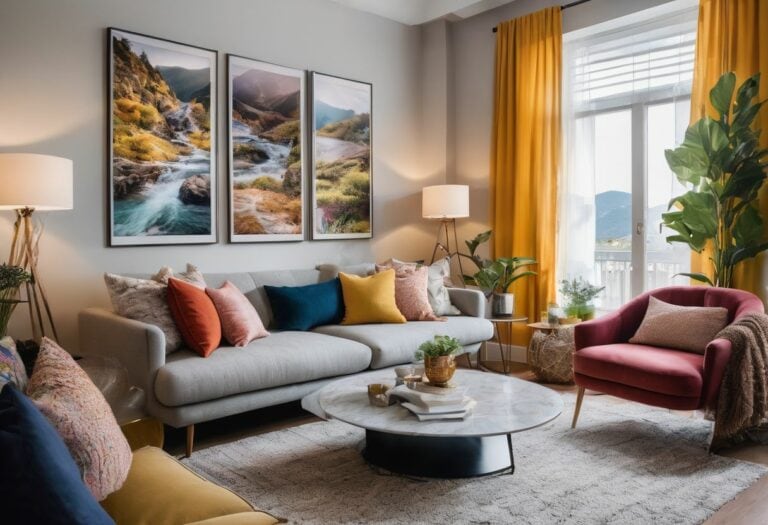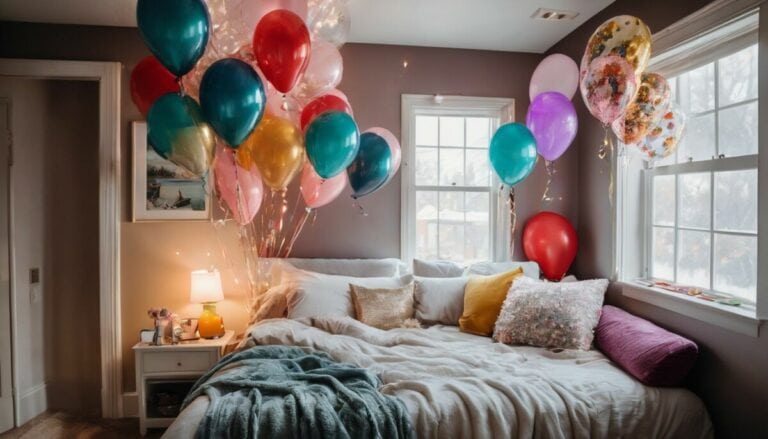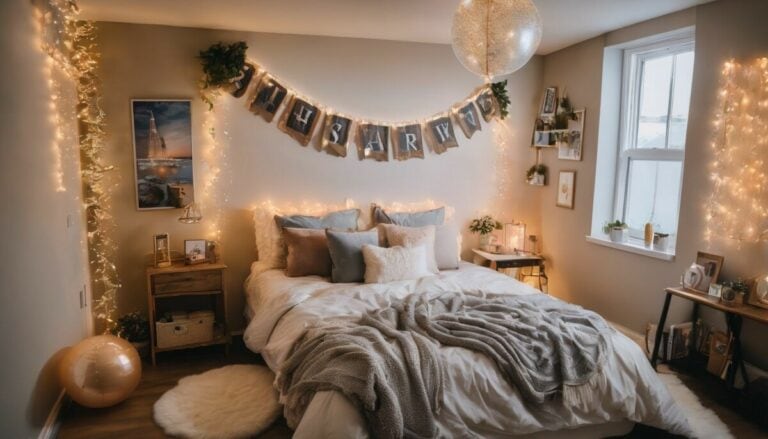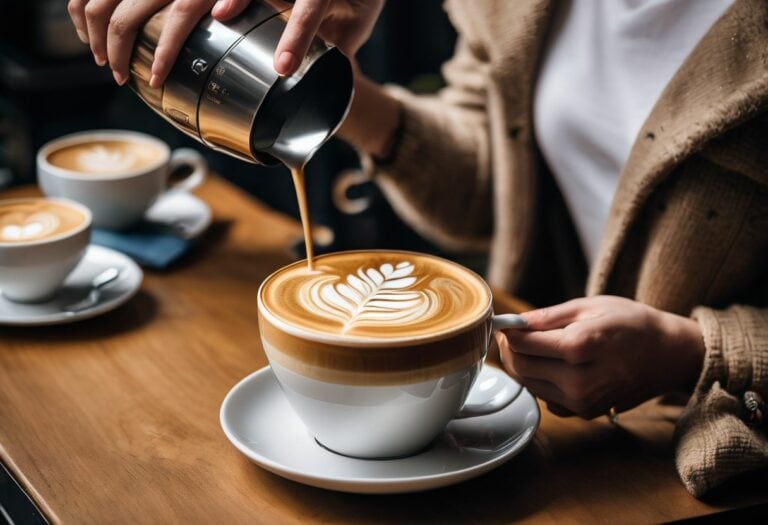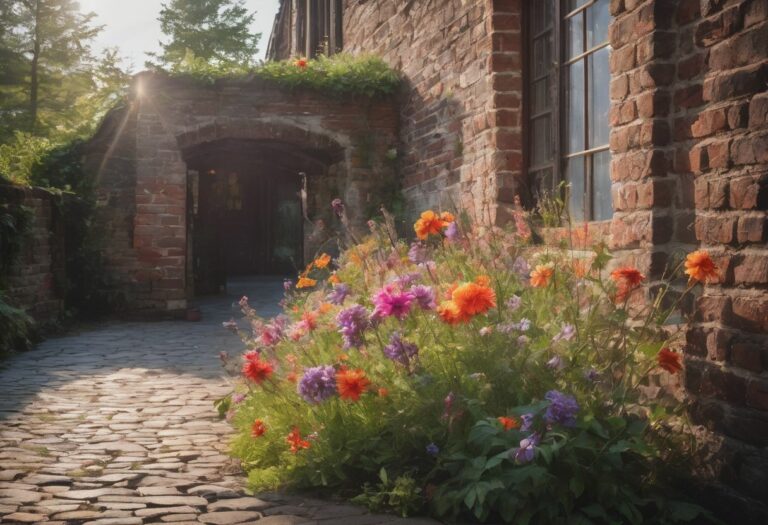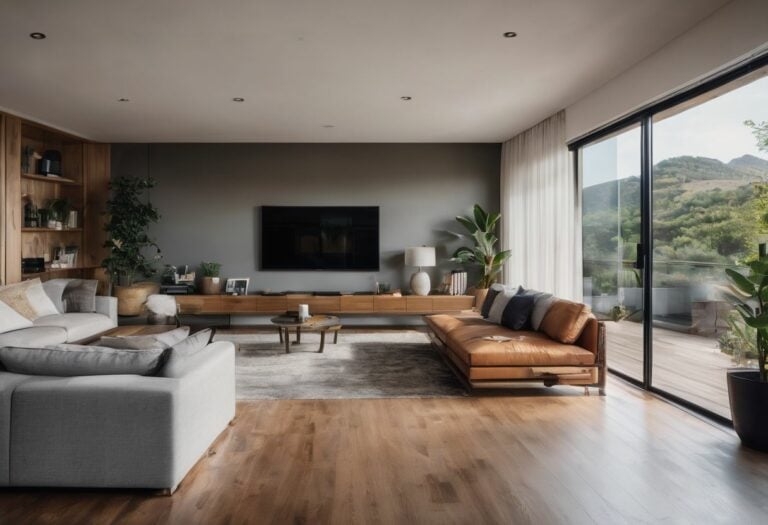Achieving Minimalist Interior Design with Plants: A Complete Guide
Welcome to the world of minimalist interior design, where each item is carefully chosen for its simplicity and functionality. Have you ever felt overwhelmed by clutter and longed for a living space that’s both calming and stylish? You’re not alone in this search for serenity at home.
A minimalist approach might just be your perfect solution, but striking the right balance can often seem elusive – especially when trying to infuse life with indoor plants.
Minimalism isn’t merely about having less; it’s about making room for more of what matters. Plants can play a pivotal role in transforming your home into an oasis of tranquility amid the chaos of daily life.
With their varied textures and vibrant green hues, they add a natural touch without disturbing the minimalist aesthetic you desire.
In this guide, we’ll navigate through choosing plants that enhance rather than complicate your space, discuss decor strategies that pair well with understated interiors, and highlight how nature can coexist beautifully within a minimalist framework.
Ready to create a peaceful retreat with just the right amount of greenery? Let’s dive in!
Defining the Minimalist Bohemian Style
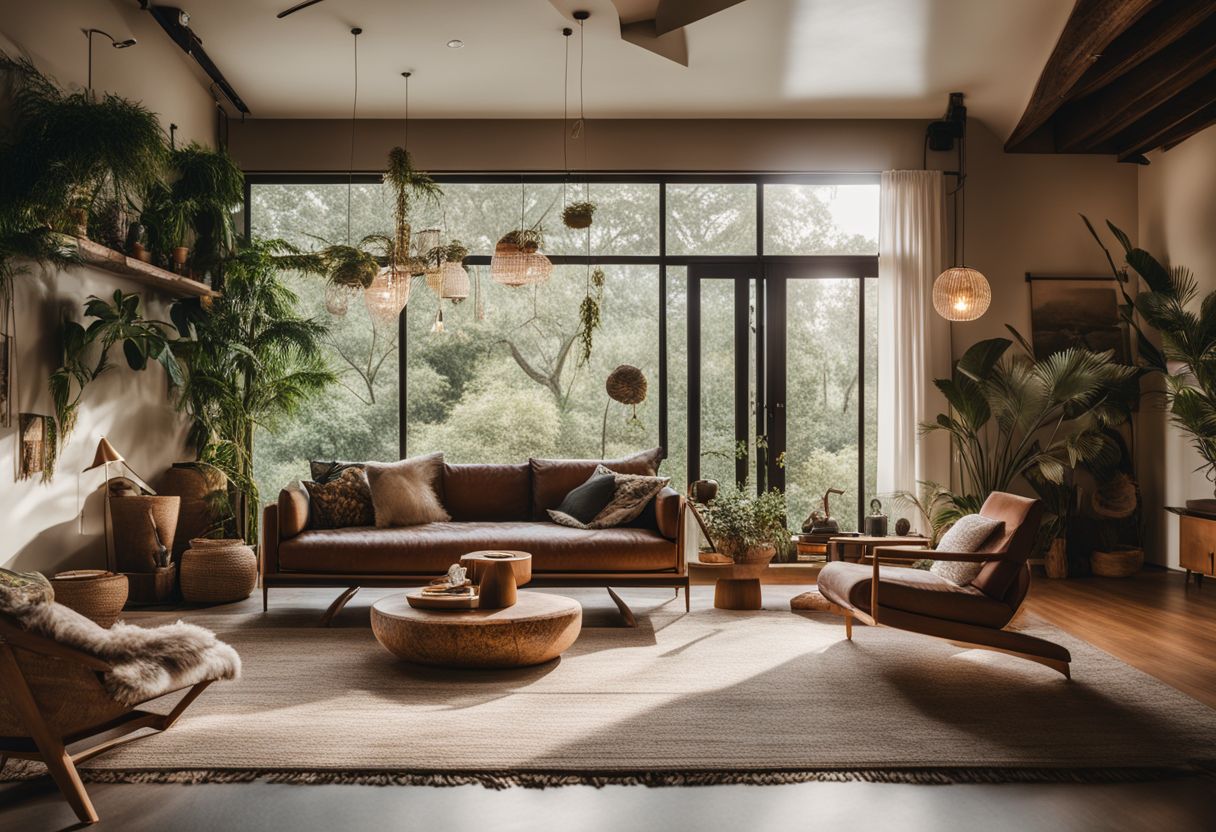
Minimalist bohemian style is a unique blend. It takes the simple and clean vibes of minimalist living and adds a touch of boho’s colorful and free-spirited look. This style is all about being cozy yet not cluttered.
You balance bright, interesting pieces with open space to make your home feel alive but still calm.
Imagine mixing different textures like soft throw pillows with sleek furniture. Think about hanging green houseplants by a sunny window without making the room feel too busy. People love this style because it’s both peaceful and personal.
They can show off their favorite colors, patterns, or treasures from travels without overwhelming the space. In minimalist bohemian homes, every item has its place; nothing is there just to fill up an empty spot.
Selecting the Right Plants for Minimalist Spaces

When it comes to creating a minimalist interior with plants, choosing the right greenery is crucial. Opt for easy-to-care-for plants that thrive in low light and have a sleek, simple appearance to complement the minimalist aesthetic of your space.
Sansevieria trifasciata (Snake Plant)
The Sansevieria trifasciata, or snake plant, is a top pick for minimalist homes. Its tall, upright leaves have beautiful green patterns that stand out in simple spaces. This plant doesn’t just look good; it works hard too.
Snake plants clean the air by taking in toxins and giving out fresh oxygen. That’s why many people like to keep them in bedrooms—where we spend a lot of time breathing as we sleep.
Caring for a snake plant is easy, which makes it perfect for busy folks who love having plants but can’t spend too much time on them. They don’t need much water and can handle different light levels well.
Plus, they’re sturdy enough to grow in various temperatures found inside most homes. With several species available, you’re sure to find one that fits your style and home decor needs.
Place one of these amazing plants next to your favorite spot or somewhere you’ll see its beauty every day—it will surely bring life to any room! Now let’s talk about another great plant choice: the ZZ Plant “Raven”.
ZZ Plant “Raven”
ZZ Plant “Raven” stands out with its black leaves that look stunning in a minimalist setting. It’s a low-maintenance house plant perfect for those who love simple yet stylish spaces.
This dark beauty is not just about looks; it also cleans the air, making your home healthier to live in.
You can find this unique ZZ plant at many stores and add it to your living room without much fuss. Its symmetrical green leaves grow into deep black over time, creating a striking contrast that catches the eye.
Plus, it doesn’t need much water or light, which makes caring for it super easy!
Ficus elastica (Rubber Tree)
Ficus elastica, also known as the Rubber Tree or Rubber Fig, is an excellent choice for minimalist interior design. It’s a tough plant that requires minimal care and maintenance, making it perfect for those wanting to add greenery without much fuss.
The plant has large, glossy leaves and multiple trunks, adding a structured yet natural element to the decor. Its hardiness makes it suitable for beginners or those with busy schedules who still want to enjoy the benefits of indoor plants.
Whether kept as a medium-sized houseplant or allowed to grow into an impressive indoor tree, Ficus elastica brings a touch of nature to minimalist spaces while requiring little attention.
Monstera Deliciosa (Swiss Cheese Plant)
Monstera Deliciosa, also known as the Swiss Cheese Plant, is a popular choice for minimalist interior design due to its large green leaves and unique holes. Native to the rainforests of Central America, this plant has strong stems that can grow quite massive indoors.
This low-maintenance indoor plant requires adequate light, warmth, and regular watering to thrive in minimalist interior settings. It’s worth noting that Monstera Deliciosa is easy to propagate and pot for hassle-free care and maintenance.
Due to its versatility and aesthetic appeal, Monstera Deliciosa makes a perfect addition for achieving minimalist interior design with plants. Its striking appearance adds an artistic touch while requiring minimal effort on the part of the caretaker.
Echeveria and Other Succulents
Echeveria and other succulents are perfect for minimalist interior design due to their stunning appearance and low-maintenance care. Echeveria plants, renowned for their adaptability, come in various shapes and sizes, making them a popular choice among plant enthusiasts.
These succulents thrive in harsh conditions and offer unique beauty with minimal effort. With striking varieties and different care methods, succulents like Echeveria provide endless options for creating captivating arrangements that complement minimalist spaces.
Succulent plants like Echeveria are not only visually appealing but also highly versatile. They pair well with various plant companions, offering opportunities to create captivating combinations in containers or as part of indoor landscapes.
Incorporating Plants into Minimalist Decor
To achieve a minimalist look with plants, it’s essential to carefully select the right planters and pots that align with the clean, simple aesthetic. Strategic placement of plants can not only enhance the visual appeal but also provide health benefits by purifying the air.
Additionally, knowing what to put on minimalist shelves can further elevate the decor while maintaining a clutter-free environment.
Minimalist Planters and Pots
Minimalist planters and pots are essential for achieving a sleek and simple look in your minimalist interior. They can complement the color scheme of your room, adding an aesthetically pleasing effect.
- Coordinating Colors: Choose planters and pots that match or complement the color scheme of your room for a cohesive look.
- Sleek and Modern Designs: Opt for minimalist planters with clean lines, geometric shapes, and neutral colors to maintain simplicity.
- Versatile Materials: Consider planters made from materials such as ceramic, concrete, or metal for a modern touch that fits well within minimalist decor.
- Multiple Sizes and Heights: Mix and match planters of different sizes and heights to add visual interest while maintaining minimalism.
- Modular Planters: Look for modular or stackable planters that offer versatility in arranging plants while keeping the space uncluttered.
- Hanging Planters: Incorporate hanging planters to save space and add a dynamic element to your minimalist interior.
- Functional Details: Choose planters with built-in drainage systems or self-watering features to ensure practicality along with aesthetics.
Strategic Placement for Aesthetic and Health Benefits
Strategically placing indoor plants in minimalist decor can significantly enhance both the visual appeal and the health benefits of your space. By carefully positioning plants, you can not only create a calming and inviting atmosphere but also improve air quality and reduce stress.
This balanced approach aligns perfectly with the Japandi aesthetic concept, which emphasizes well-being and visual harmony through minimalistic design elements. Moreover, in biophilic interiors, smart plant placement contributes to creating healthier living or working areas that promote both aesthetics and well-being.
When incorporating plants into minimalist interior design, consider how their placement complements the overall balance of the space. For example, introducing low-maintenance succulents in designated areas like shelves or countertops can add a touch of greenery without overwhelming the simplicity of a room’s layout.
Choosing clean-lined planters that complement your minimalist style while providing adequate space for root growth is essential for successful integration of greenery. Opting for sleek designs with neutral colors will seamlessly blend with your décor while enhancing its natural appeal.
What to Put on Minimalist Shelves
After strategically placing plants for aesthetic and health benefits, it’s important to consider what items to put on minimalist shelves to maintain the uncluttered look. Here’s a guide for selecting the perfect decor:
- Geometric Ceramic Planters: Opt for clean-lined, simple geometric ceramic planters that blend seamlessly with the minimalist design.
- Air-Purifying Plants: Choose sleek, modern pots to house air-purifying plants like snake plants and ZZ plants, enhancing both style and air quality.
- Artistic Vases: Display artistic vases in neutral tones or clear glass for a touch of elegance while staying true to minimalism.
- Sculptural Bookends: Use sculptural bookends that double as art pieces, adding visual interest without overcrowding the shelves.
- Monochrome Art Prints: Select monochrome art prints or minimalist illustrations in black frames to create a sophisticated focal point.
Conclusion
In conclusion, achieving minimalist interior design with plants is about embracing simplicity and purposeful decor. By carefully selecting the right plants and incorporating them strategically, you can add a touch of nature to your space without overwhelming it.
Remember that less is more – focus on a few well-chosen plants rather than overcrowding the area. With thoughtful consideration and creativity, you can create a harmonious and tranquil environment that effortlessly blends minimalist aesthetics with the beauty of nature.
Happy decorating!
FAQs
1. What plants are good for a minimalist interior design?
For a minimalist look, choose plants like the snake plant (mother-in-law’s tongue), rubber plant, jade plant (Crassula ovata), Chinese evergreen, fiddle leaf fig, and peace lily.
2. Can I use big plants in a simple room style?
Yes! Big plants like the bird of paradise or ficus lyrata can be great in rooms with more space. They help keep the design simple but also make a strong statement.
3. How do I water my minimal indoor garden right?
It’s best to let the soil dry between watering. Cacti and other drought-tolerant plants need less water than others like ferns or calatheas which might need soil moisture check often.
4. Are there low light friendly options for houseplants?
Sure! Look for low light plants such as the Chinese evergreen, satin pothos, spider plant or golden pothos (Epipremnum aureum) if your space doesn’t get much sunlight.
5. What small-sized houseplant is easy to take care of that fits minimalist decor?
Consider getting a Chinese money plant (Pilea peperomioides), jade plant or lucky bamboo for an easy-to-care-for green touch in your living spaces.
6. Can hanging plants match with simple home designs too?
Yes indeed! Hanging cactaceae family members like Senecio rowleyanus or string of hearts (Ceropegia woodii) adds elegance without clutter to any room aiming for simplicity.


